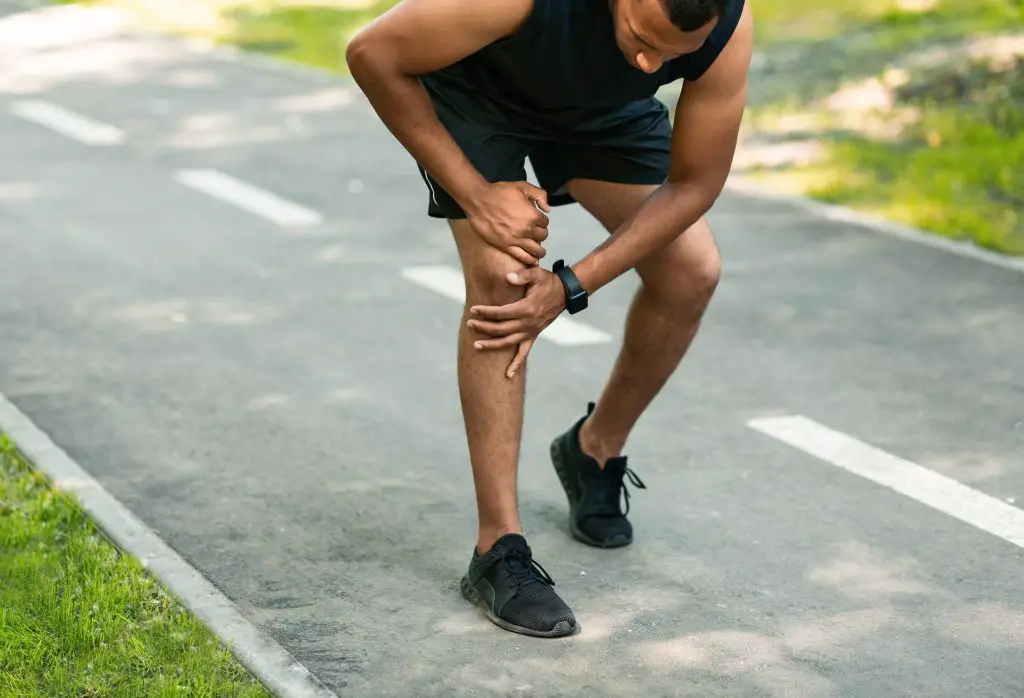Inner knee pain after running is a common issue affecting novice and experienced runners alike. This type of discomfort can present itself as a sharp, dull, or aching sensation on the inside part of the knee, and it often arises either during a run or shortly thereafter.
The pain may stem from various sources, such as overuse, improper running technique, or an underlying medical condition.
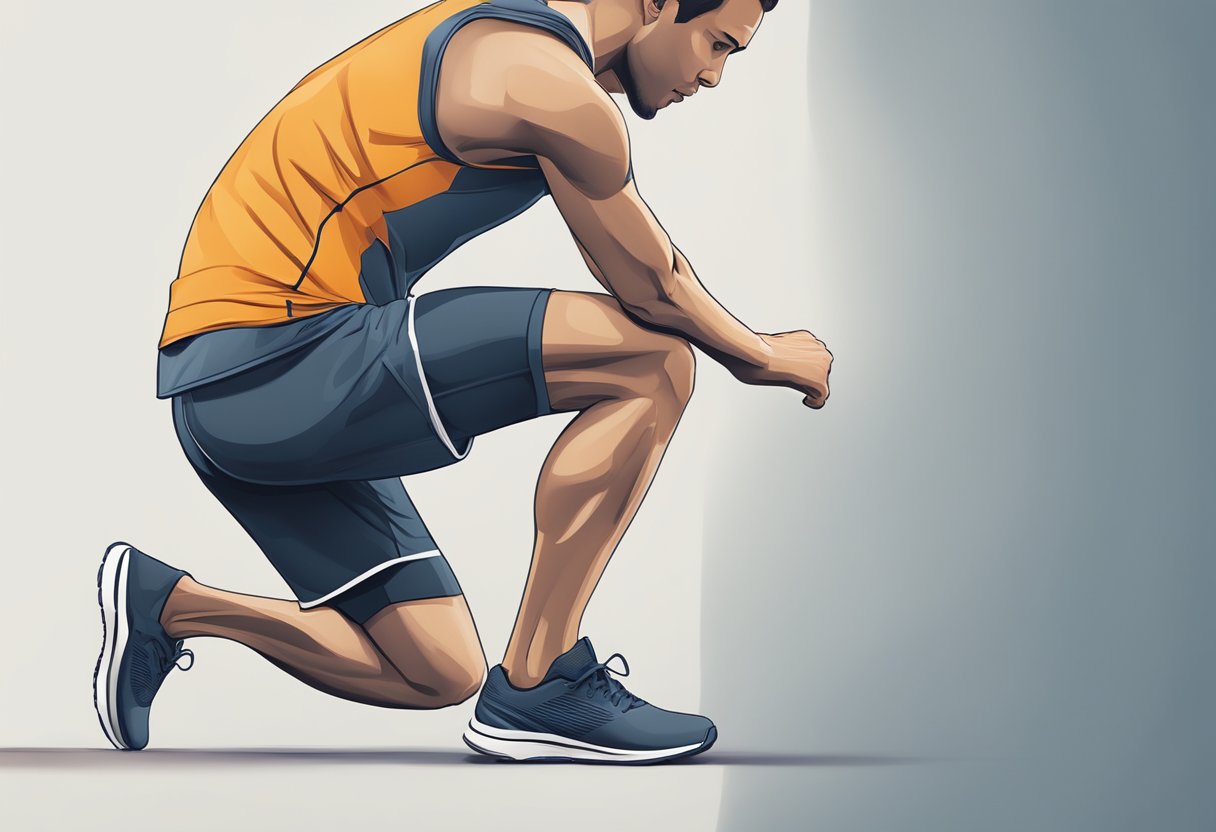
Determining the cause of inner knee pain is crucial for developing an effective treatment plan. It is essential to consider when the pain occurs, its intensity, and whether certain activities exacerbate it.
Addressing inner knee pain promptly can help prevent more serious injuries and ensure you can continue your running routine with minimal interruption.
Key Takeaways
- Inner knee pain is common for runners and typically manifests during or after running.
- Identifying the root cause of the pain is essential for treatment and continued running activity.
- Early intervention and proper management can help prevent more serious knee injuries.
Quick Navigation
Understanding Inner Knee Pain
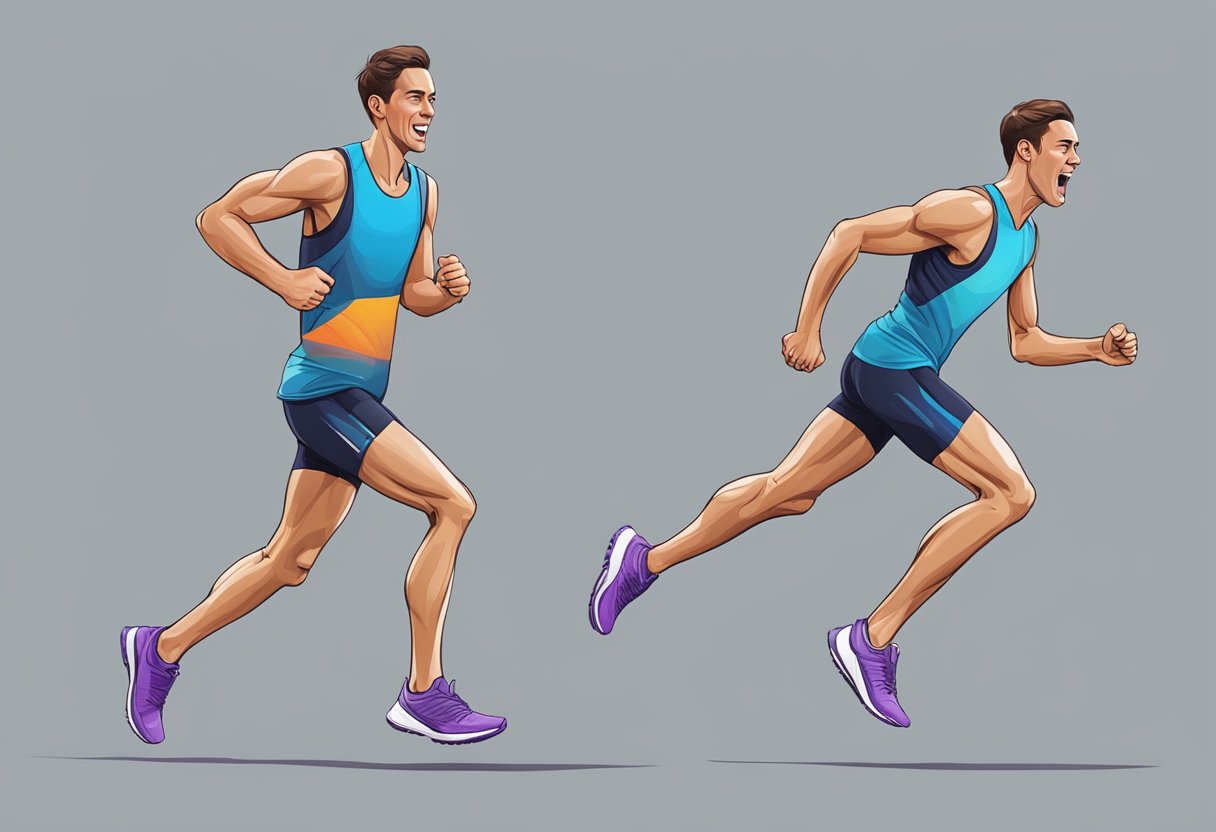
When you experience inner knee pain after running, it’s important to know the structures involved, the potential causes, and the types of injuries that can occur. This understanding can help you take appropriate measures for recovery or prevention.
Anatomy of the Knee Joint
Your knee joint is a complex hinge joint connecting the thigh bone (femur) to the shin bone (tibia). Structures such as the medial collateral ligament (MCL) provide stability to the inner side of the knee.
The joint is protected in front by the knee cap (patella) and cushioned by cartilage, including the medial meniscus, which aids shock absorption.
Common Causes of Inner Knee Pain
Medial knee pain often results from stress on the knee joint. Key issues include medial meniscus tear, where the cartilage is damaged from twisting or overuse.
Medial plica syndrome, where irritation of the inner knee occurs, can also cause discomfort. Over time, repetitive activities can lead to knee arthritis, characterized by degeneration of the joint surfaces.
- Patellofemoral Pain Syndrome: Often referred to as a runner’s knee, this condition leads to pain around the knee cap and is exacerbated by activities like running.
- Medial Collateral Ligament (MCL) Injury: An overstretched or torn MCL can cause pain inside the knee after sudden twists or impacts.
Types of Knee Injuries and Conditions
While running, various injuries can affect the knee:
- Medial Meniscus Tear: Fairly common in runners, it typically presents as pain along the inner knee, sometimes with swelling or difficulty bending the knee.
- Iliotibial Band Syndrome: Not typically medial knee pain, but can contribute to overall knee issues due to tightness on the outer knee affecting knee mechanics.
Injuries like an anterior cruciate ligament (ACL) tear, although not exclusive to the medial side, can indirectly cause inner knee pain due to the instability they introduce to the knee joint. Any persistent pain should be evaluated to determine the specific condition and appropriate treatment plan.
Symptoms and Diagnosis
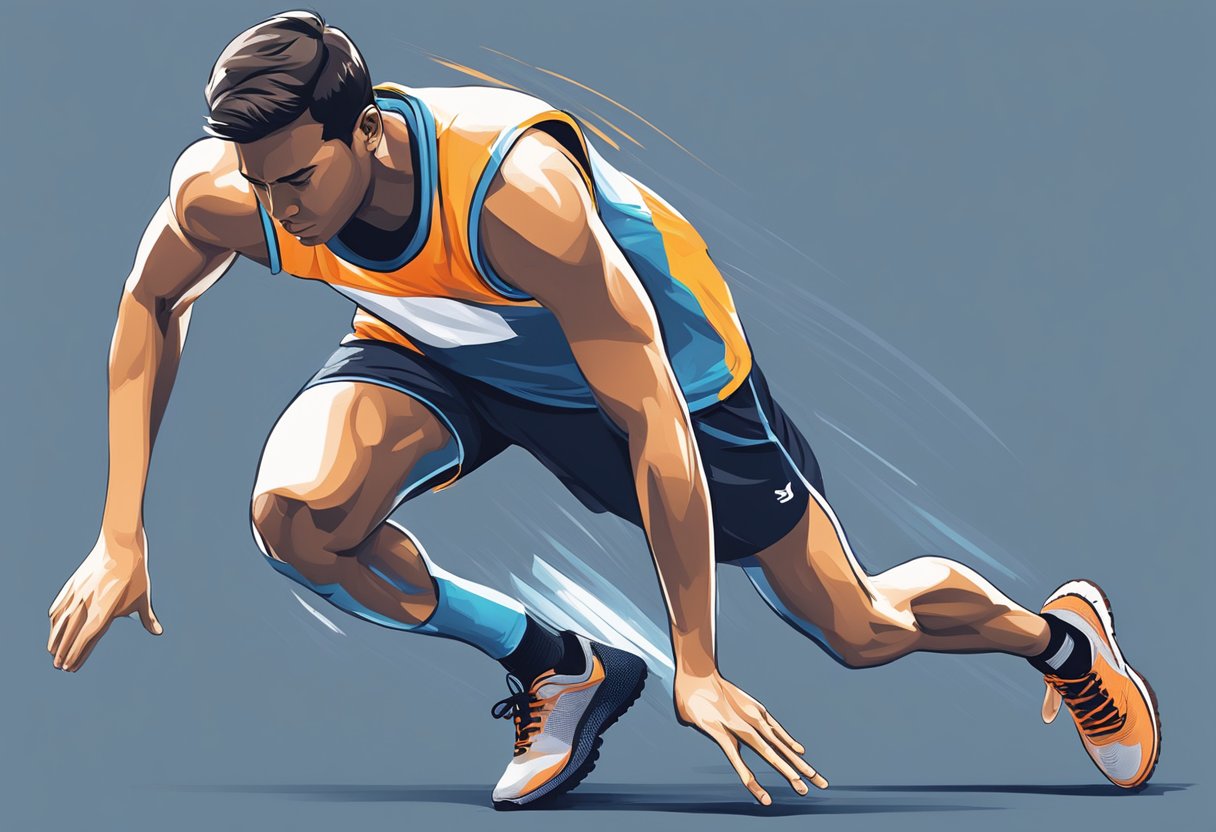
If you’re experiencing inner knee pain after running, it’s essential to understand the symptoms associated with knee injuries and the steps required for an accurate diagnosis.
Recognizing the Symptoms
Your inner knee pain can present itself in various ways. It might be a sharp pain you feel immediately upon impact during a run or an aching sensation that develops over time.
Common symptoms include:
- Acute pain while applying pressure to the inner knee
- Swelling within the joint or surrounding area
- An inability to bear weight comfortably on the affected leg
- Sensations of instability or weakness in the knee joint
- Pain when engaging in activities such as running, squatting, or going up and down stairs
When to See a Healthcare Provider
You should consider visiting a healthcare provider if you experience severe pain or if the following symptoms persist:
- Pain remains steady or worsens after rest
- Difficulty in performing daily activities due to knee discomfort
- Noticeable swelling, redness, or warmth around the knee
- Any joint pain that arises suddenly without an identifiable cause
Diagnostic Procedures
A healthcare provider will use a combination of your medical history, a physical examination, and imaging tests to diagnose the cause of your knee pain.
Diagnostic procedures may include:
- MRI scan: Offers a detailed image of bone and soft tissues, including the knee’s fluid-filled sacs (bursae).
- X-ray: Helps to identify any bone fractures or signs of arthritis.
- Ultrasound: Assesses the supporting structures of the knee joint in motion.
These tools aid in determining the extent of the injury and the most effective treatment plan.
Treatment and Management: Inner Knee Pain after Running
Effective treatment and management of inner knee pain after running entail immediate and long-term strategies. Your action plan should address immediate pain relief, involve medical professionals when necessary, and incorporate ongoing management techniques to prevent future discomfort and injury.
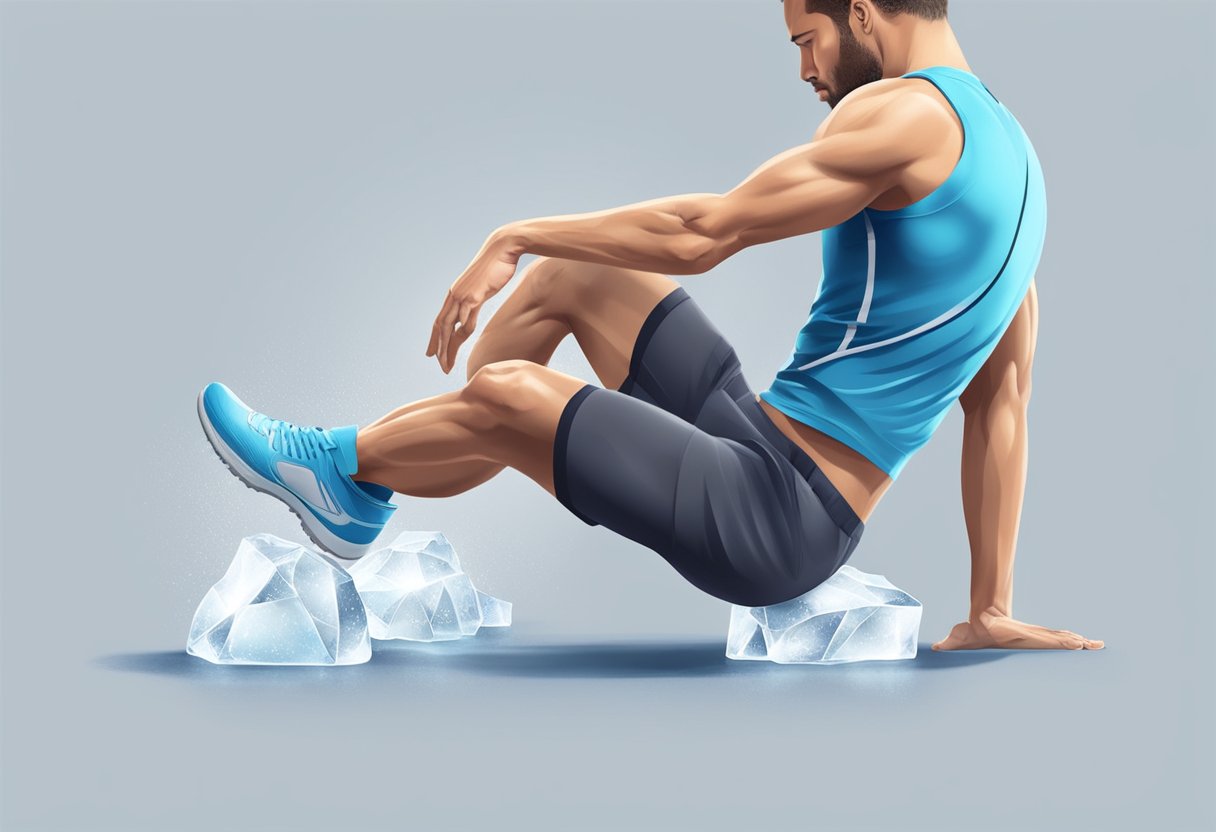
Initial Pain Relief Measures
Ice and Rest: When you first experience knee pain, reduce inflammation and pain by applying an ice pack for 20 minutes several times a day. Make sure to rest your knee and avoid activities that exacerbate the pain.
Nonsteroidal Anti-Inflammatory Drugs (NSAIDs): Over-the-counter medications such as ibuprofen can offer short-term pain relief. These are most effective in the acute phase following injury or pain onset.
Medical and Professional Treatments
Seek Medical Advice: Consult a healthcare provider if your knee pain persists or worsens. They can accurately diagnose the cause of the pain, such as knee bursitis or knee osteoarthritis, and recommend specific treatments.
Physical Therapy: A physical therapist can design a tailored exercise program to correct muscle imbalances contributing to knee pain. Strengthening and stretching exercises can improve joint stability and reduce stress on the knee.
Knee Brace: A knee brace may provide extra support, especially during activities that strain your knees. Selecting the right type of brace in consultation with a professional is imperative.
Corticosteroid Injections: For severe or persistent pain, corticosteroid injections administered by a healthcare professional may be an option. These injections can alleviate inflammation and provide relief, but they are generally reserved for more serious cases.
Long-Term Management Strategies
Strengthening Exercises: To prevent the recurrence of knee pain, incorporate exercises that strengthen the quadriceps and hips into your routine. Strong muscles around the knee can help absorb the forces that running exerts on the joint.
Altering Running Technique: Modifying your running form can significantly impact knee stress. Consider seeking advice from a sports therapist or a coach to analyze and adjust your running technique.
Appropriate Footwear: Wear suitable running shoes that provide proper support and cushioning, reducing impact and stress on your knees as you run.
Inner Knee Pain after Running: Prevention and Rehabilitation
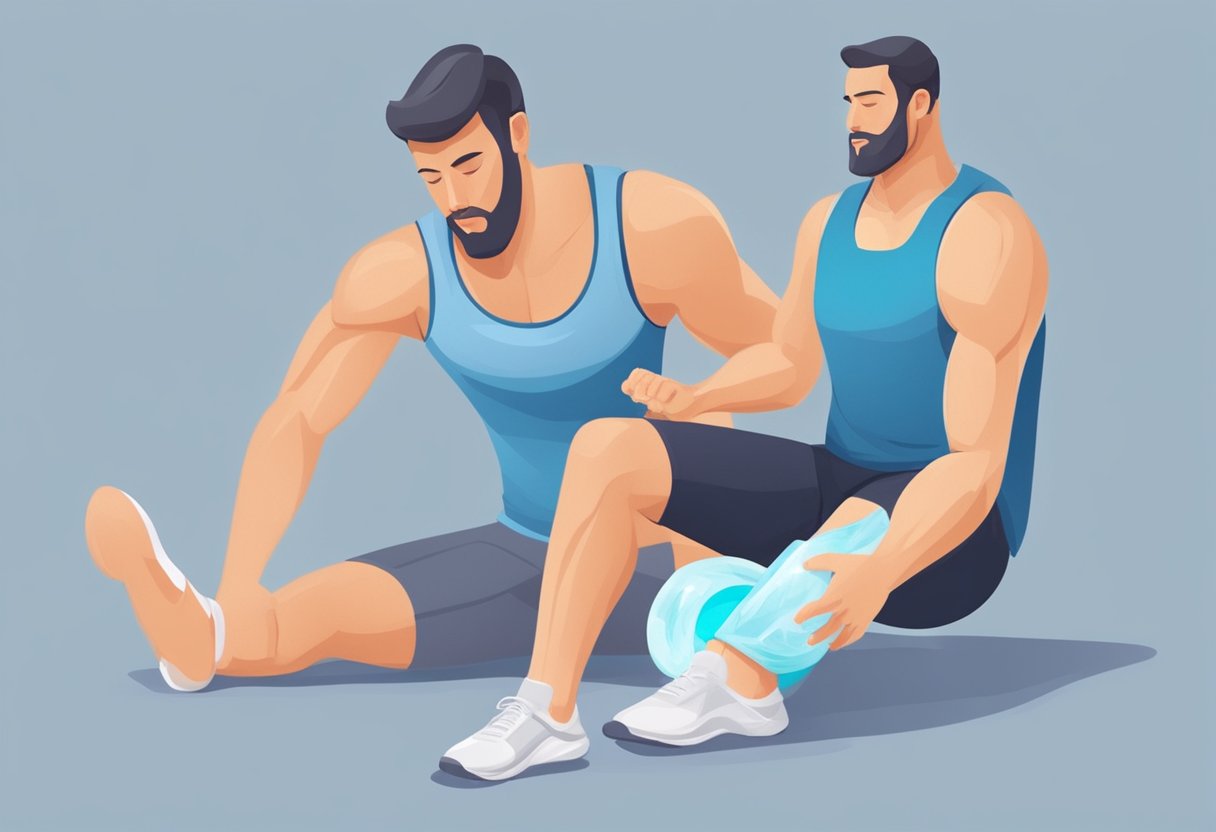
Effective prevention and rehabilitation strategies are crucial for runners to avoid inner knee pain. Implementing targeted exercises and ensuring proper equipment can significantly reduce the risk of injury while enhancing recovery from existing issues.
Strengthening and Conditioning
A regimen of strengthening exercises is essential to stave off injuries like a runner’s knee. Focus on building the muscles around your knee, particularly your quadriceps, hamstrings, and calves.
Strength training can alleviate muscle weakness, which is a possible cause of knee pain. Incorporate exercises like squats and lunges, ensuring you maintain the correct form to avoid additional knee stress.
Example Strengthening Exercises:
- Squats
- Lunges
- Hamstring curls
Proper Footwear and Running Form
Your running shoes play a significant role in knee health. Replace worn-out shoes promptly to avoid imbalances that lead to pain.
It’s also a good idea to consult a specialist to find shoes that complement your running gait. A physical therapist can analyze your running form and suggest modifications to minimize knee stress.
- Checklist for Footwear:
- Adequate arch support
- Proper fit
- Regular replacement
Rehabilitation for Inner Knee Pain after Running
If you’re recovering from inner knee pain, following a tailored rehabilitation plan is vital. Begin with gentle stretching exercises to improve flexibility and move on to gradual strengthening workouts.
Consulting with a physical therapist can provide a great way to ensure that your recovery regimen is effective and does not exacerbate your condition.
Initial Rehab Exercises:
- Gentle knee bends
- Leg lifts
- Straight leg raises
Remember to listen to your body throughout your training and rehabilitation processes. Progressing too quickly or ignoring pain can lead to further injury.
Lifestyle Considerations
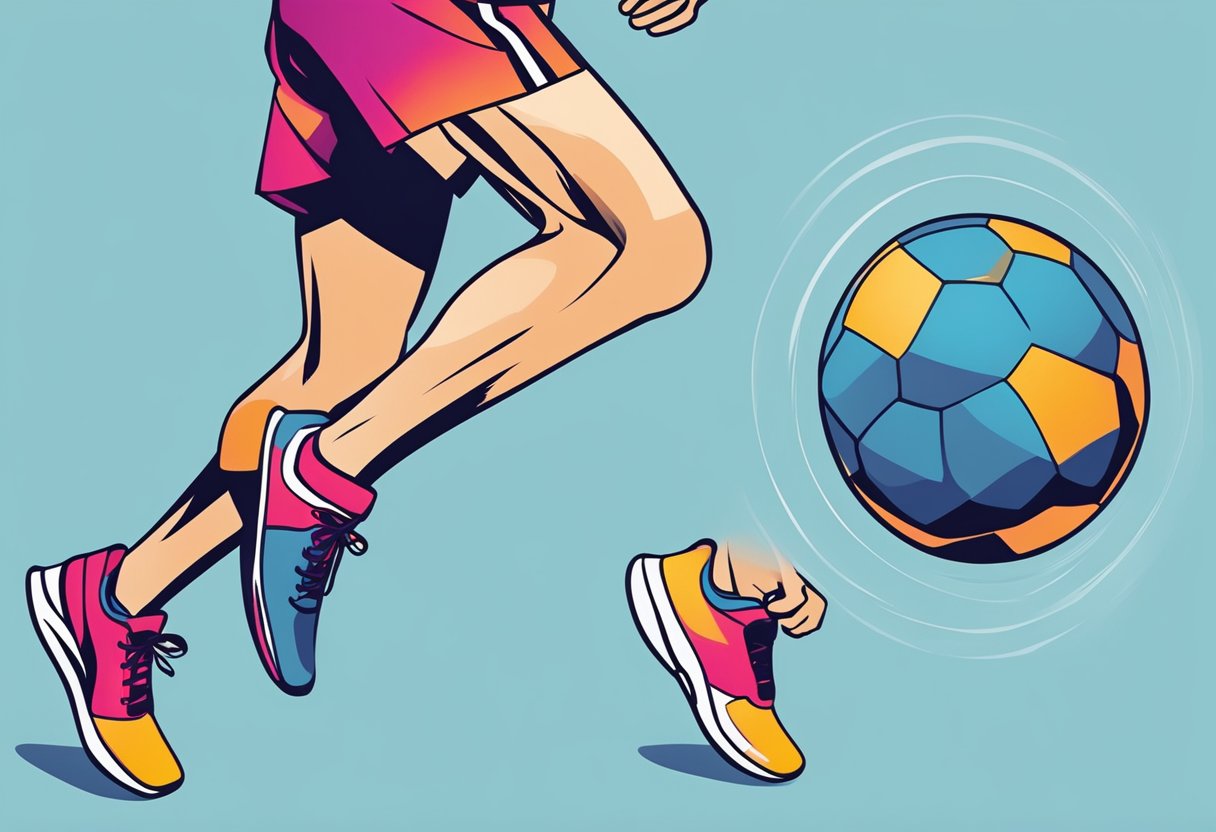
When addressing inner knee pain after running, consider how daily habits, nutritional choices, and your psychological state can influence your experience of pain and recovery.
Impact of Daily Activities
Your daily activities have a direct impact on your knee health. If you spend long periods seated, constantly change positions and integrate leg stretches to strengthen your hip muscles.
Supportive footwear for individuals with flat feet, even when not running, can help maintain proper alignment and reduce knee stress.
Nutritional Support for Joint Health
A balanced diet aids in managing and preventing knee pain. Incorporate foods high in omega-3 fatty acids and antioxidants to support joint health.
Foods like salmon, nuts, and berries are beneficial. You can also consider home remedies like ginger tea, which possesses anti-inflammatory properties.
Psychological Aspects of Chronic Pain
Chronic pain can be mentally taxing. Knee pain from running is one example.
Mindfulness meditation and stress-relief techniques can improve your psychological well-being.
Make sure to assess participation in contact sports or rigorous activities. Balance them with adequate rest to avoid exacerbating knee pain.
Inner Knee Pain after Running: Conclusion
Dealing with inner knee pain after running requires a comprehensive approach that includes understanding the cause, recognizing symptoms early, and implementing effective treatment and management strategies. Whether adjusting your running technique, choosing the proper footwear, or strengthening the muscles around the knee, each step is crucial in addressing this common runner’s ailment.
Remember, prevention is key to avoiding long-term damage and ensuring your running journey is enjoyable and pain-free. By taking the proper precautions and seeking appropriate care, you can overcome inner knee pain and return to the running paths with confidence and strength.

